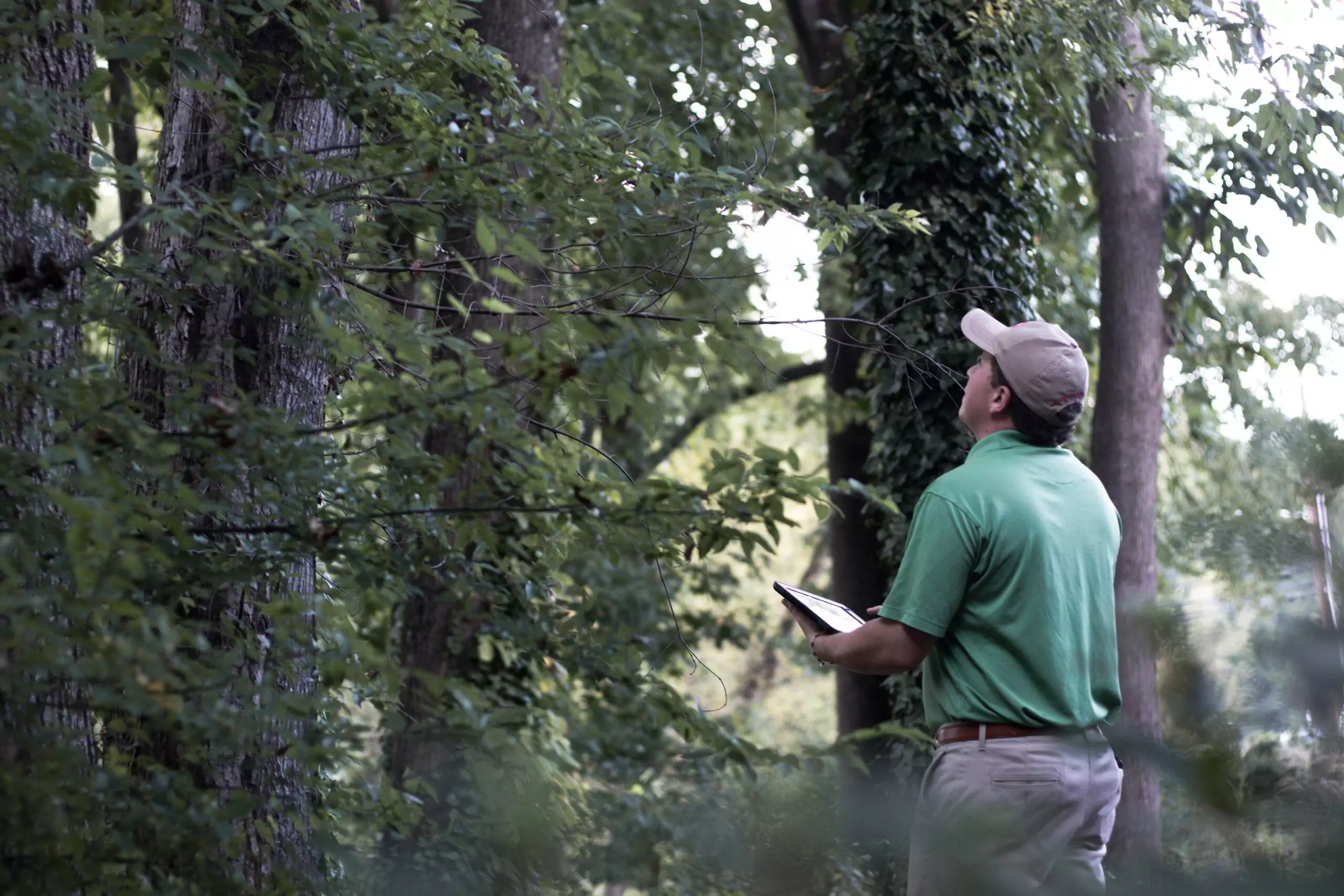How to Get Paid for Estimates
This post was written by green industry veteran and SingleOps account executive Sean Adams. It was published originally on his LinkedIn. To see how SingleOps can help your business, you can schedule a free online demo here.

As a contractor, one of the biggest time sucks is estimating your work. Whether you are in residential or commercial, clients want detailed breakdowns and walkthroughs on exactly what to expect on a project/service including the costs.
In the busy season this can leave you running around to every random request like a dog after a rabbit. Have you ever stopped and wondered return on investment (ROI) was on all that effort you expel for your estimates?
Before I explain any further.. I would like to clarify that the examples and theme I am describing here is in regards to installation or service work that is project based.. In other words with an average cost of $1,500 and up. If you are selling a repetitive service at a lower price point, there are other ways to differentiate and improve your ROI that I will describe in a separate publication.
Let’s look at an example and run the numbers… Let’s assume the average contractor closes 50% of the work they quote using the free estimate strategy. In this example the contractor averages 10 new estimates a week with each estimate taking approximately 1.5 hours with travel. We will also assume that the contractor’s average project is worth $2,000. The pricing will not account for expenses associated with travel, overhead etc. We will assume in the example the contractor is providing pricing right on site and not having to calculate pricing back at the office.
The Free Estimate Model:
- 10 estimates x (1.5 hours each) = 15 hours per week spent estimating
- 10 estimates given x 50% closing rate = 5 won jobs
- $2,000 average job x 5 won jobs = $10,000 in revenue closed
- $10,000 / 15 hours spent = $666 per hour spent estimating
The Consultation Fee Model:
What if you were to pre-qualify those 10 estimates at the time of the call without visiting the site and found that only 6 of those callers were serious and we were willing to pay for a $100 consultation fee to review their project.
Your closing rate is statistically proven to significantly increase when the client has skin in the game and pays for a consultation.
- 6 estimate requests x $100 each consult fee = $600
- 6 estimate requests x (1.5 hours each) = 9 hours per week spent estimating
- 6 estimates given x 80% closing rate = 4.8 closed jobs
- 4.8 closed jobs x $2,000 average job = $9,600 + $600(consult fees) = $10,200
- $10,200 / 6 hours spent = $1,700 per hour
Let me guess.. you are saying to yourself “Sure but my market would never pay for me to simply come out and price work that the competition does for free.”
If you are selling a commoditized service and are providing the exact same level of quality, professionalism and experience as your competitors, then you are correct in assuming your market will not pay you for a consultation.
But if your company truly can deliver a better experience for the client, you are doing yourself a disservice by giving away your time without pre qualifying. Take the time to write up what your company’s specific differentiators are. What are the adjectives and promises you can deliver and why should they hire you?
These differentiators are your secret weapon. When you spend the time to craft a truly impactful story about your business and what the experience will be like for a potential client, you position yourself as the expert.
Chances are the property owners that are expressing interest in a project/service, do not have the skillset, tools or desire to handle it on their own. Therefore, they are actively seeking a professional not just for the execution of the work but also for the peace of mind and education as to what the best solution is for their problem.
Imagine their surprise when you are the second or third company they call and expect a response of: ”Yes Sir we will stop by tomorrow and take a look. What’s your address?” But instead get a polite, highly professional conversation that is jam packed with specific targeted questions about them, their project and property. This conversation leads into an explanation of the products available, equipment you use, their expected timeline and their budget with suggested pricing brackets.

That intentional phone call went from a cold, quick unimpressive interaction to a highly valuable education completing outlining what they can expect. Your simple structured conversation may have opened their eyes to the general cost of the project they are interested in and immediately made they realize they do not have the budget at this time. You have now saved yourself a trip (1.5 hours) and positioned your company as the first person they call when their budget opens up.
As a service provider, you can no longer hide behind the excuse of “there are too many tire kickers out there”. It is time to take responsibility for the outcomes in your business and get intentional about each and every interaction with a potential client. That initial phone call is the prospect’s first impression of your company, give them the experience they need and not just what they think they want.
You may be saying to yourself this all sounds good in theory but I don’t want to quote work over the phone – there are far too many variables for me to predict, I like to see jobs in person. The purpose of the intentional scripted initial phone call is not to quote an arbitrary price over the phone, but instead to walk the potential client through a series of pointed questions so you can determine if the project is the right fit for you AND if you are the right fit for the potential client.
When it comes down to it most potential client calls reveal their exact intentions right on the phone – “We just want to get some information on a project we were thinking about and find out what it might cost us.” Yet we take that as an invitation to show up on their property, try to pitch them on a quick price and collect a deposit.. Then we have the nerve to blame the property owner when they say it’s too expensive and they need to find someone cheaper.

It all comes down to fear. We are afraid to ask detailed questions, we are afraid to ask for a consultation fee, we are afraid to quote them a wide-ranging price bracket. I challenge you to look at that fear in a different light.
The root cause of that fear is the unknown.. When you do not know what’s going to happen we rely on some distant painful memory of a time we asked for something and a client shut us down. We paint this tiny pointless memory as the rule rather than the exception that it is.
This defense mechanism is only in place because you do not have a quality system to rely on to build confidence and understand the possible objections. What you need is an outlined script that helps you educate the potential client and walk them through a process that naturally flows into the big ask.
Here are our tips for crafting your ideal script outline:
1.YOU ARE THE PROFESSIONAL
- Remember it is your job to dictate how this engagement will go. This starts with the first introduction to your company on the phone and how to greet their request. Ask detailed questions about their contact information, how they heard about you, and what made them reach out. Find out what pain-points they naturally reveal that you can help solve. It may be things like: “We just have no idea what something like this costs.” or “We don’t know what to do to solve this issue.” or “We are on a tight timeline and need to get this project complete by xxxx.”
- All these statements are the callers way of telling you what they value and are really looking for in a service provider. Use their responses as fuel, frame your answers as solutions and educate them on what you would suggest.. They want your professional opinion.
2. SET CLEAR EXPECTATIONS
- As the professional, you should be provided a clear roadmap to your potential client on ow this current conversation is going to go and IF it is agreeable what the next steps are. After you gather the contact information, spell out exactly what they can expect on the next few minutes of the call.
- Explain that you will be asking them some specific questions about the project they mentioned and will then be giving them feedback and explanations on what they can expect. From there, if it makes sense for us to continue, explain how an on site meeting/consultation would work and if they are comfortable with that we will setup that appointment right here on the call today.
3. LISTEN MORE THAN YOU TALK
- Once you begin the script – it should be designed to ask pointed questions that allow the caller to open up and describe in their own words what their priorities are and ultimately what would make them choose you.
- Just like in poker, you can use context clues and intentional questions to get the caller to tell you everything you need to know. It is not trickery but rather a purposeful investigation into the caller to ultimately make a decision on whether both parties think it makes sense to meet in-person.
4. ESTABLISH A BUDGET + PRICE BRACKETING
- Understand that most of your competition is going to answer the phone and go right out on site to meet with the client. This means the potential client is not conditioned to receive any sort of useful information over the phone including a general price range for the project in question. This means that it is your job to structure the flow of conversation so that it is natural to bring up..
- Try something like this:
- “We certainly understand there are budgetary restrictions on most any project. Based on the project you have described, what our clients find helpful is providing you with some rough pricing brackets so you can better understand the investment if you choose to go with our company..”
- An Option: “For us to get the best understanding of the project, we request our potential clients to send us over photos of the area and project details. This should include:”
- Spell out what photos you should like here..
- “After we review your photos we will setup an on site paid consultation. During this 1 hour meeting we will go every all the details of the job, flush out a scope of work, discuss materials and products choices. We charge $$$ for our time for this.. If you choose to use our company for this project we will go ahead and deduct that $$$ consultation fee right from the total cost of the work.”
- Your goal is to prove to them that you have done this before and that the consultation process will be worth their time. The psychology behind this is that the micro commitment they give you by paying for your time right away, makes them much more likely to choose you as their contractor.
5. GET TO A DECISION
- During this discovery period try to get to a YES a NO or a NOT NOW. The answer does not matter as much as them choosing a decision does. If they are not interested in paying for a consultation, you should not be expelling any more time with them. If they are not ready right now, you should be putting a note down to follow up with them when they think they might be ready.
- If they choose to take the paid consultation, you want to move on that appointment as fast as possible to continue your excellent customer service. Don’t get caught up in the waiting game of a call back or “Maybe”. Being professional and clear with all your expectations up to this point has painted a vivid picture of what a potential client can expect from you.
6. GET TO HOW IT WORKS
- In each stage of the script move onto a clear description of the next steps. Once you get to the consultation pitch and hopefully confirmed appointment, continue this practice and explain in detail the next steps. We like to send an appointment email after the call with a breakdown of 3-5 step process reiterating what they can expect and making sure they have any decision makers, measurements and details prepared for the meeting.